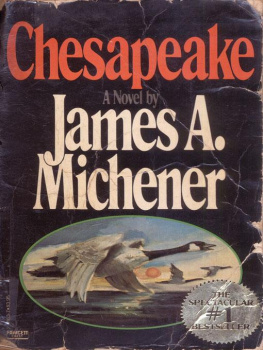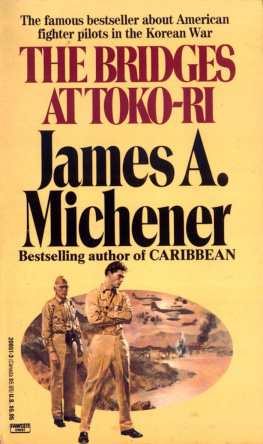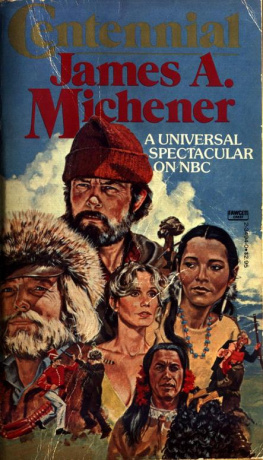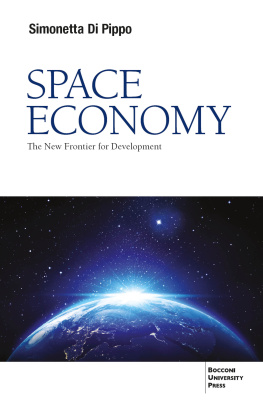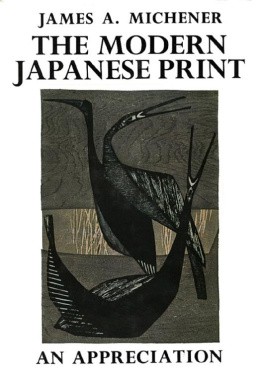SPACE
THIS BOOK SHOULD GIVE MICHENER FANS
EXACTLY WHAT THEY EXPECT.
NEW YORK DAILY NEWS
A NOVEL OF VERY HIGH ADVENTURE ...
A sympathetic, historically sound treatment
of an important human endeavor that some day could be
the stuff of myth, told here with gripping effect ... vivid scenes.
Mr. Michener leaves us with the hope
that the dream of exploring space will not die.
NEW YORK TIMES BOOK REVIEW
Michener has laid bare, with a newspaper reporters
pitiless instinct for the truth, the central issue of
modern American society. Better than most writers,
he gives his readers an understanding of the men and women
involved in the mighty saga of space.
By using the space program as a cutting edge,
Michener has shown a cross section of America today-
all the bright promise of our glittering technology,
all the choices we face today in our
continual striving to build a better tomorrow
WASHINGTON POST
A MASTER STORYTELLER ...
Mr. Michener, by any standards, is a phenomenon.
SPACEis one of his best books.
Here, as many times before, he teaches us
and compels us to think largely about large things.
WALL STREET JOURNAL
Michener blends his fictional
space story with real people and events.
And the result is a fascinating look at space exploration.
Theres a lot of information here about space
and the U.S. space program as well as a
colorful cast of characters.
ASSOCIATED PRESS
AN EXPANSIVE PAGEANT OF THE
AMERICAN SPACE PROGRAM ...
Spaceskillfully blends fiction and non-fiction.
It evinces a love of the land and a reverence for nature.
It exudes a kind of upbeat humanism.
The book deserves the wide audience it will
almost certainly have. It tells a good story.
And better, it does not shy away from the
technical and the scientific.
Micheners SPACE exalts the rigorous
application of mind as the natural accessory of dream.
BOSTON GLOBE
MICHENER HAS BECOME
AN INSTITUTION IN AMERICA,
ranking somewhere between Disneyland
and the Library of Congress. You learn a lot from him.
CHICAGO TRIBUNE BOOK WORLD
THE WORLDS BEST
RESEARCHER OF NOVELS.
Spacecertainly has a remarkable theme.
The struggle between immaculate science and the
vulgarities of politics is very well portrayed.
And Mr. Michener is eloquent in depicting the actual
flights into space, as well as the blazing, apocalyptic
reentry of the shuttle into earths atmosphere:
NEW YORK TIMES
THE COSMIC APPROACH TO FICTION ...
SPACEis everything that Michener fans
have come to expect. Without question, the space programs
dramatic dimensions provide the stuff of great fiction.
BUSINESS WEEK
A DIFFICULT BOOK TO PUT DOWN ...
And this subject is one which is hardly stale for,
as we all know; we are still on the threshold;
the real poetry of space travel has yet to begin!
BALTIMORE EVENING SUN
SWEEPING AND MIND-ENHANCING ...
Michener grapples with the ultimate mystery-
that of the universe, what lies beyond our galaxy
and the billion galaxies beyond that.
This is not only Micheners most ambitious novel:
it is also his most challenging and his most compelling.
Salud!
JOHN BAR.KHAM REVIEWS
Fawcett Crest Books
By James A. Michener:
THE BRIDGES AT TOKO-RI
CARAVANS
CENTENNIAL
CHESAPEAKE
THE COVENANT
THE DRIFTERS
THE FIRES OF SPRING
HAWAII
RETURN TO PARADISE
SAYONARA
THE SOURCE
TALES OF THE SOUTH PACIFIC
SPACE
James A.
Michener
FAWCETT CREST - NEW YORK
A Fawcett Crest Book
Published by Ballantine Books
Copyright 1982 by James A. Michener
All rights reserved under International and Pan-American Copyright
Conventions. Published in the United States by Ballantine Books,
a division of Random House, Inc., New York, and simultaneously
in Canada by Random House of Canada Limited, Toronto.
Library of Congress Catalog Card Number: 82-40127
ISBN 0-449-20379-4
This edition published by arrangement with Random House, Inc.
Manufactured in the United States of America
First International Edition: August 1983
First U.S. Edition: November 1983
ACKNOWLEDGMENTS
ON 4 July 1976 I was invited by Dr. Donald P. Hearth of the National Aeronautics and Space Administration to participate in a round-table discussion of the meaning of Americas Viking landing on Mars, and with that heady introduction to the greatest minds of the space age I began my serious study.
In the spring of 1979 I was appointed to the NASA Advisory Council, which advises NASA , and there I met repeatedly with men who conducted our space effort, and visited several times the great NASA bases at which the work was done. I was allowed to participate in the full life of the agency. I did this uninterruptedly for four years.
Lacking specialized training in science, I was disadvantaged, but my long experience with mathematics and astronomy repaired some of the deficiency, and my work with various aspects of our program repaired other gaps. Most of all, I talked incessantly with experts, visited laboratories, and studied procedures.
My acquaintance with NASA engineers and scientists was extensive, and to them I owe a great debt, especially those at Langley, Wallops, Ames, Houston, Huntsville, Goddard and the Jet Propulsion Laboratory.
My acquaintance with astronauts was more spotty, for I [ii] met only those who bumped into me as I went about my other duties. Deke Slayton was most helpful. John Young was an inspiration. Donn Eisele, a neighbor, gave me many insights. Because the Shuttle dominated the horizon in the years of my incumbency, I knew its pilots: Robert Crippen, Joe Engle, Dick Truly. Ed Gibson was extremely helpful in my study of the Sun, about which he has written brilliantly. Joe Kerwin, a medical astronaut with weeks in orbit, was unusually helpful on four different occasions. I had brief but rewarding interviews with Mike Collins, a graceful writer about space, and the two elegant women astronauts Judith Resnick and Anna Fisher.
At headquarters I was accorded courtesies by Dr. Robert Frosch, the administrator, and by Dr. Alan Lovelace, his assistant. They made available the consultative services of General Harris Hull, Dr. John Naugle, NASA s chief scientist, Nat Cohen, the executive secretary of our council, and Jane Scott, who supervised my movements. Before his untimely death in the Himalayas, Tim Mutch met with me many times to discuss scientific and managerial points.
Certain experts were recommended to me as unusually informed and helpful in their fields, and to these I am indebted:
Battle of Leyte Gulf : Admiral Felix Stump, who commanded one of the baby flattop squadrons in that historic naval engagement, and Bill Lederer, his witty assistant.
Peenemnde : Dr. Ernst Stuhlinger and Karl Heimburg, both of whom made the hegira from Peenemnde to El Paso to Huntsville.
Next page

